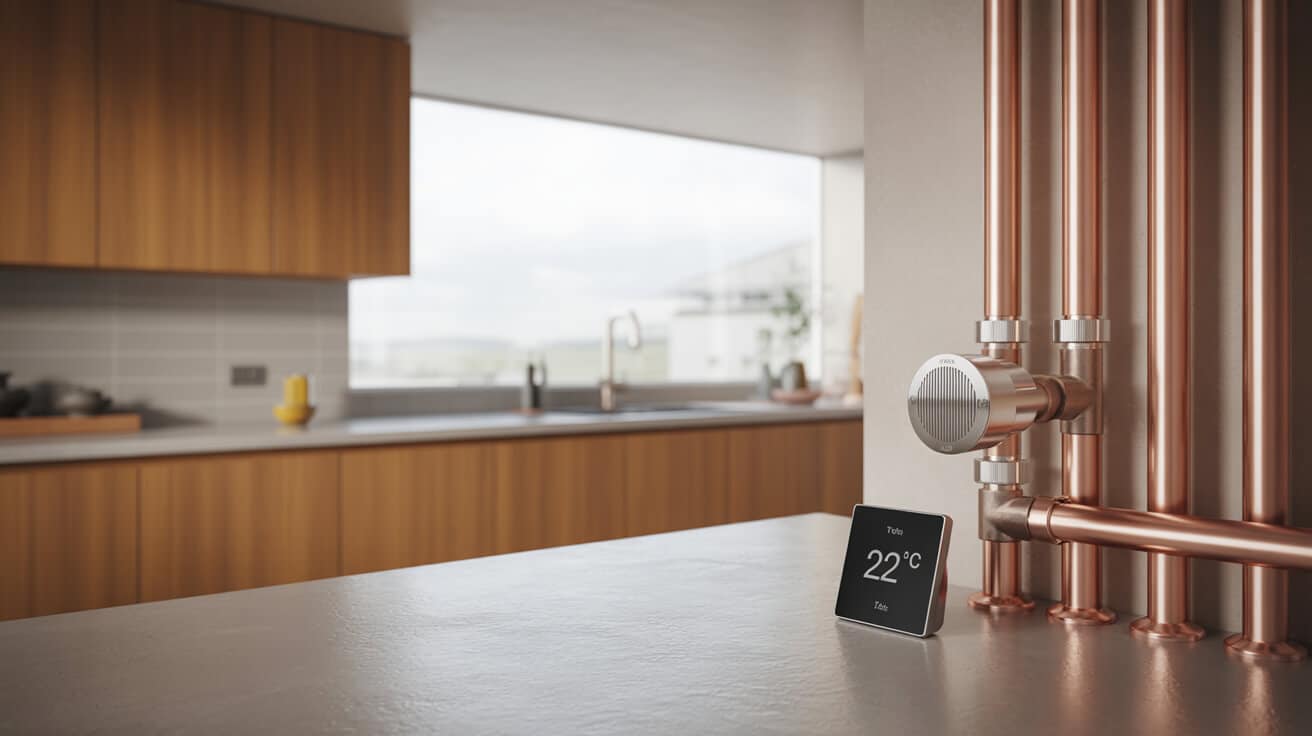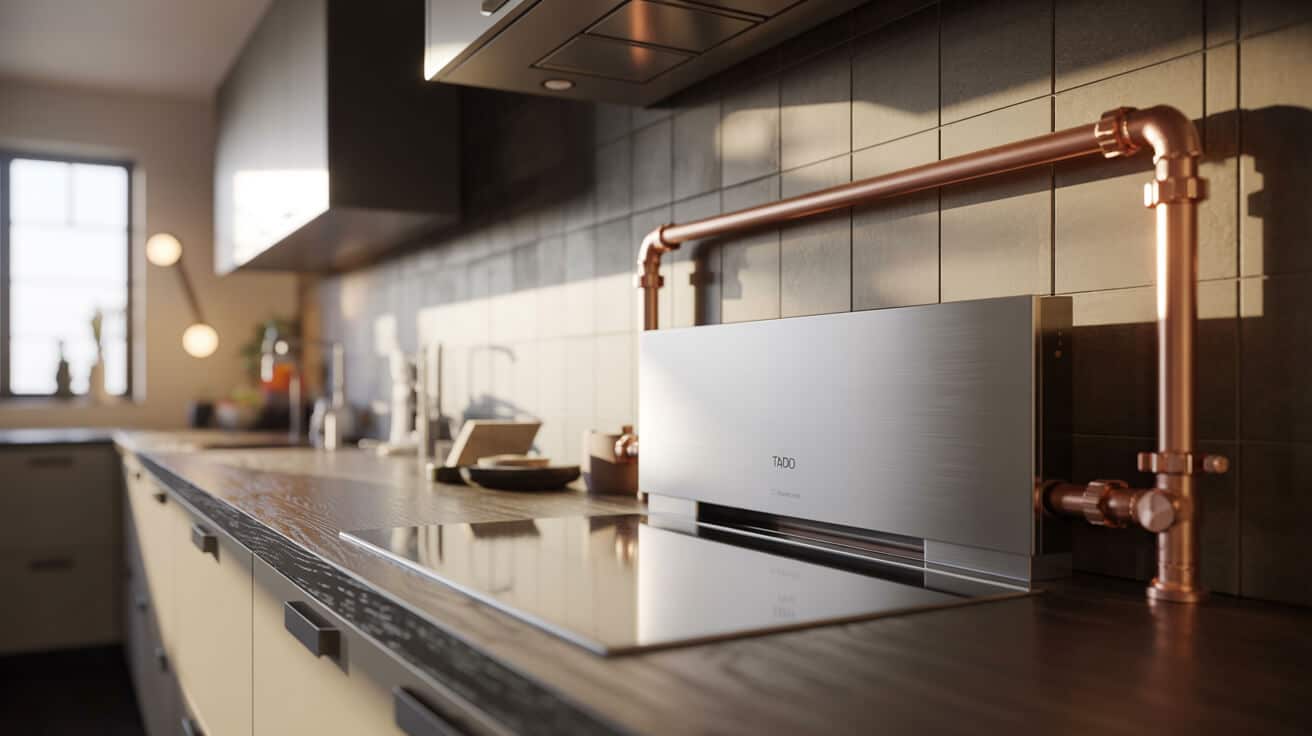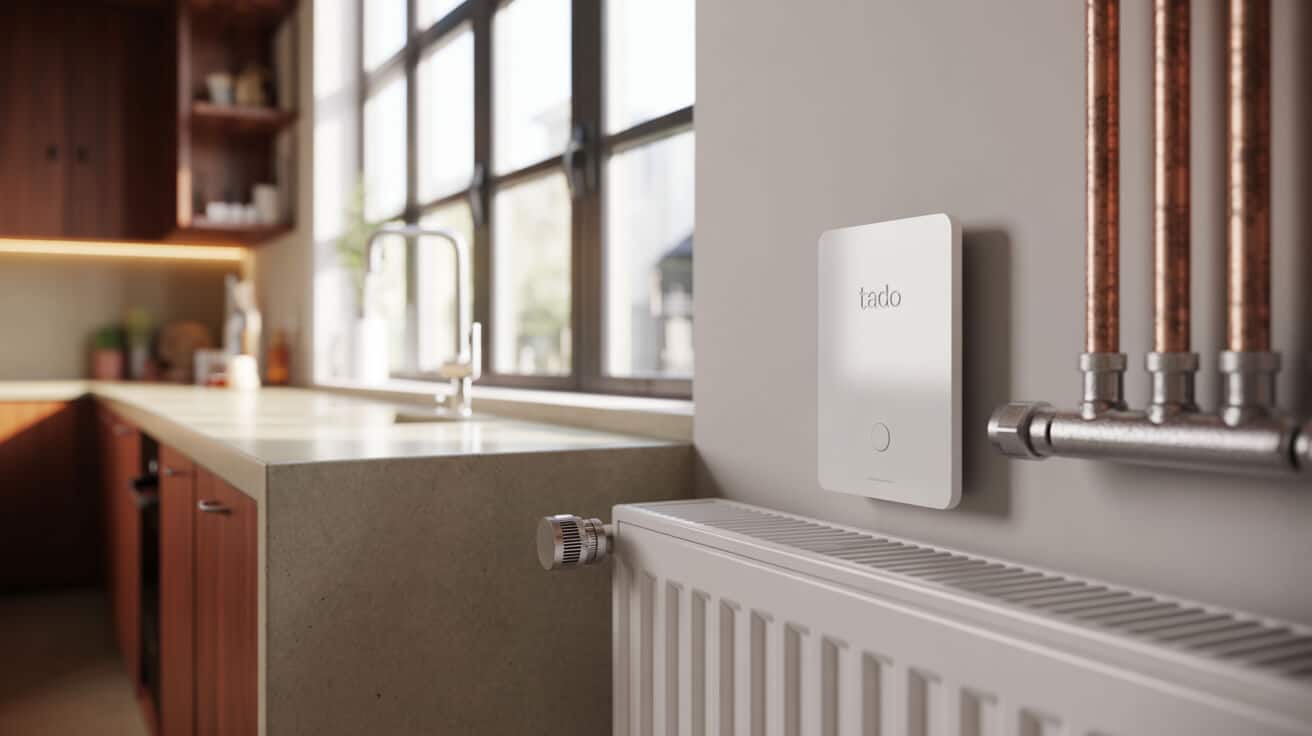Digital heating control systems such as Tado form the core of modern climate management in UK dwellings and commercial buildings. The adoption of such technology has reshaped energy use patterns, compliance expectations, and end-user experience. Your ability to control, monitor, and fine-tune heating outcomes through intuitive interfaces, automatic scheduling, and adaptive programming yields both practical and regulatory benefits. Your company or household’s comfort, compliance, and operational continuity depend increasingly on professional installation and ongoing support from service providers operating at the interface of plumbing engineering and smart technology.
Etymology or Name Origin
The naming of “Tado” is a stylized brand construct representing a shift from static thermostatic control to digital, interconnected heating solutions. As a company, Tado reflects a commitment to the German tradition of engineering precision within the realm of dynamic home and commercial environment management.
Smart heating, as understood in the British building services sector, signifies a transition from conventional thermostats to intelligent, automated device networks capable of optimising ambient conditions. These smart platforms rely on wireless protocols, modular hardware, and integration with software applications that facilitate remote management and behavioural learning. The semantics of “connected climate control” now encompasses geofenced activation, cloud-based analytics, and user-contingent comfort logic, distinguishing it from passive, non-programmable heating solutions.
Industry adoption of the term “smart” is evidenced by related vocabulary: programmable thermostat, wireless temperature regulator, and cloud-enabled zone management. The underlying linguistic trend signals a move toward user-centric, data-informed system design that personalises climate outcomes while supporting your regulatory and economic objectives.
Overview / Context
The evolution of building services at the intersection of plumbing, heating, and digital control exemplifies the contemporary drive for operational efficiency, energy savings, and property value reinforcement. Central to this trajectory is the role of the smart thermostat—most notably, Tado—as a mediation point between occupant needs and system performance.
Widespread adoption of connected heating is propelled by several intersecting drivers:
- Legislative mandates: —such as the United Kingdom’s Building Regulations Part L (energy conservation), MEES (Minimum Energy Efficiency Standard), and requirements of high EPC ratings—necessitate precise, optimised heating systems.
- Technical progress: —wireless communication, advanced sensor feedback, and open-protocol device design make seamless integration into legacy and new plumbing/heating infrastructures possible for your property.
- Consumer and business demand: reflects a preference for hands-off control, customised schedules, and security in both private and commercial environments.
Professional installers, including multidisciplinary teams at Plumbers 4U, play a uniquely integrative role: assessing your system’s readiness, specifying device lists, managing safe installation, and providing ongoing maintenance. This lifecycle approach ensures that your company or household benefits from the full functional spectrum of Tado smart heating—beyond basic installation, extending to compliance certification, troubleshooting, and performance monitoring.
History
Early programmable thermostats and manual heating
For much of the twentieth century, British buildings relied on manual thermostats with simple on/off logic, limited to time-clock programming and singular room feedback. Mechanical valves and wall-mounted dials defined the norm for heating activation, with minimal link to user behaviours or environmental data.
Emergence of digital and app-based controls
The 2000s witnessed the introduction of microcontroller-based programmable thermostats. These platforms permitted you to set daily or weekly schedules, responding to your anticipated usage patterns. The evolution of wireless networking and proliferation of smartphones—alongside UK government emphasis on home energy efficiency—catalysed the next leap: app-connected, adaptive systems capable of remote control and automatic adjustment.
Entry and expansion of Tado
Founded in Munich, Tado pioneered geofencing, predictive heating, and modular zone control, aligning with the wider European regulatory shift toward low-carbon, high-comfort buildings. Tado’s UK expansion coincided with key milestones in Part L and MEES legislation, fostering partnerships with installer networks such as Plumbers 4U.
Regulatory convergence and mass deployment
Rising legislative requirements (for example, EPC compliance as a legal minimum for rental properties) drove the adoption of professionally installed smart systems. Energy providers, local authorities, and large property managers began specifying such systems not just for comfort, but to meet portfolio compliance. Meanwhile, your household or company’s expectations for system updates, maintenance, and integration with new infrastructure (heat pumps, underfloor heating) accelerated a shift to continuous service models embedded in smart heating deployment.

Concept / Description
Core principles
At its core, Tado smart heating is a networked control ecosystem comprising a digital thermostat, wireless radiator actuators (TRVs), extension modules, and a companion application. The architecture allows your heating system to respond to occupancy, ambient temperature, user-defined schedules, and real-time weather feeds.
- Central control unit: Manages heating logic, receives sensor input, and transmits commands.
- Wireless TRVs: Enable room-by-room temperature regulation and fine-tuned zoning.
- Extension kit: Interfaces boilers, water tanks, and complex multizone layouts, bridging the physical with the digital layer.
- Internet bridge: Links your system to the cloud for mobile control and over-the-air update delivery.
- Tado app: Facilitates user configuration, remote monitoring, and system analytics—enabling your direct control over comfort settings and energy-saving routines.
System communication
Tado devices use a hybrid of proprietary wireless and recognised open protocols (e.g., OpenTherm, wireless mesh), allowing for flexible deployment in both new and existing British properties. App-based or manual controls transmit setpoints and receive device feedback, enabling your system to automatically self-adjust based on learned behaviours, geolocation, or environmental data provided (with user consent).
Functionality / Purpose / Applications
The functional scope of a Tado installation centres on providing adaptive, user-responsive heating that prioritises both comfort and energy savings in a compliant manner.
Key capabilities
- Scheduling and zoning: You can define precise heating intervals, tailor temperatures by room, and automate schedules to reduce unused heating time.
- Adaptive learning: The system analyses your usage patterns, occupancy, and local weather to self-optimise heating times and energy use.
- Remote access and monitoring: Via your mobile application, you (and authorised users) may monitor temperature, receive alerts, or enact real-time overrides.
- Multi-user control: Administrative rights permit multiple users—family members, building managers, or your maintenance partners—to adjust, monitor, or restrict zones as needed.
- Integration with property types: Systems accommodate traditional radiators, underfloor heating, combi and system boilers, and multi-zone commercial layouts.
- Energy and compliance analytics: The platform generates reports on consumption, potential savings, and performance relative to regulatory targets, which you may use for compliance and assurance purposes.
Common applications
- Domestic dwellings: Empower you to increase comfort and reduce costs, adding resale or rental value.
- Managed and tenanted properties: Provide compliance evidence (EPC, MEES) and simplified management.
- Commercial and communal buildings: Enable centralised control, granular reporting, and integration with business management or building control systems.
Classifications / Types / Variants
Product ecosystem
- Smart Thermostat (V3+): Central wireless or wired thermostat, supporting most UK heating architectures.
- Smart radiator thermostats: Replace legacy TRVs for each radiator, offering per-room zoning and direct wireless control.
- Extension/boiler interface kit: Integrates with non-combi boilers, enabling hot water scheduling as well as heating.
- Sensors and environmental monitors: Add-ons for occupancy, humidity, or carbon data.
- Internet bridge: Required for remote access and cloud-based routines.
- Accessory bundles: Kits preconfigured to simplify procurement for your specific property size or heating architecture.
Market variants
| Solution Type | Core Features | Ideal Use Cases |
|---|---|---|
| Standalone Smart Thermostat | One zone, single property | Flats, small homes |
| TRV Starter Kit | Room-level control, modest property size | Family homes, retrofits |
| Multi-Zone Bundle | Zoning, hot water, multi-flow control | Large homes, HMOs, commercial suites |
| Commercial & Portfolio | Scalable, centralised, multiuser, compliance reporting | Offices, managed lettings |
Industry comparison
Alternatives such as Hive, Nest, Evohome, Wiser, and Netatmo offer competitive feature sets. Variation in open protocol support, TRV compatibility, system automation depth, and integration with external platforms may inform your selection—typically following a professional survey.
Systems / Tools / Methodologies
installation steps
1. Survey and audit
- Property analysis: Map your heating circuits, radiator count, plumbing layout, and zone requirements.
- Boiler and valve check: Identify make, model, and compatibility; test safety interlocks.
2. System design and device selection
- Kit choice: Match thermostats, TRVs, and extenders to heating topology and user needs.
- Network planning: Optimise wireless bridge placement; assess Wi-Fi/ethernet access.
3. Physical installation and wiring
- Device siting: Wall mount thermostats for reference temperature; avoid direct heat or cold sources.
- TRV fitting: Drain pressurised circuits; remove existing valves; instal/wire smart valves.
- Extension kit/boiler interface: Access and wire to specified terminals (OpenTherm or relay modes); ensure all isolations and safety checks.
4. Application setup and network registration
- Device pairing: Use QR codes or manual registration (per manufacturer instructions).
- App configuration: Set user roles, zone labels, initial temperature setpoints, and notification preferences.
5. Commissioning and validation
- Functional tests: Simulate demand across rooms; ensure heating and hot water respond as programmed.
- Documentation: Complete commissioning form, warranty registration, and schedule periodic maintenance reviews.
Tools unique to professional installation
| Tool/Method | Purpose |
|---|---|
| Insulated electrical tools | Compliance & safe working in wired circuits |
| Multimeter | Voltage and continuity checks |
| Pipe/cable detectors | Drilling and device positioning safety |
| TRV removal keys | Safe replacement of radiator valves |
| Diagnostic apps | Wireless/network survey and device validation |
| Wi-Fi/Ethernet analyzers | Bridge connection optimization |

Stakeholders / Entities Involved
Certified professionals
Engineers certified to Gas Safe, Part P (electrical safety), and, where needed, WRAS requirements undertake system specification, installation, and commissioning. Their ongoing development ensures the skills required for integrating legacy hydraulic systems with digital controls.
End-user organisations
- You/your household: Participate in initial survey, application onboarding, and ongoing system management.
- Landlords and managing agents: Rely on compliance documentation and system reporting for letting obligations and tenant liaison.
- Commercial operators: Value centralised user management, system analytics, and scalable support models.
Oversight bodies and standards
Certification is often needed from Gas Safe, WRAS, and, for larger instals, TrustMark or MCS-registered organisations. These agencies provide assurance of regulatory and technical alignment.
Legal / Regulatory / Ethical Considerations
Building regulations
- Part L (energy efficiency): Requires timely temperature control, zone management, and efficiency-optimising technology.
- Part P (electrical): Governs all fixed wiring in residential heating control instals. Installation must be tested and, where necessary, notified to building control.
- Part G/H (water safety, drainage): TRV or valve work intersecting with mains circuits may be subject to water safety and drainage byelaws.
Compliance and certification
Plumbers 4U and similar firms issue commissioning records, completion certificates, and warranty documentation for your file, facilitating future resale, compliance checks, or grant eligibility. Where required, these documents demonstrate your adherence to EPC/MEES thresholds in the rented sector.
Data privacy
Tado’s app-powered systems, while processing usage and presence data, operate under GDPR. Professional installers provide you guidance around registration, data sharing, and security settings. Multi-unit dwellings and commercial portfolios may require you to formalise user access policies for tenant or occupant data privacy.
Performance Metrics / Data / Measurements
Energy and cost analytics
- Fuel use: Properties deploying adaptive schedules and occupancy-driven setback show, on average, 10–30% reduction in energy consumption over conventional programmable thermostats.
- Temperature uniformity: System performance is tracked via app analytics, highlighting setpoint achievement and zone variance.
- Reliability and support: User surveys indicate that service models centred around proactive diagnostics and scheduled maintenance reduce downtime and maximise expected lifespan.
Warranty, repair, and service
Lifetime warranty status, frequency of physical repairs (valve, bridge, thermostat), and incident data are logged, with remote troubleshooting and firmware updates streamlining support.
Comparative performance table
| Metric | Standard Thermostat | Tado Smart System |
|---|---|---|
| Energy savings | Low | High |
| Zone control | Single/Basic | Multi-zone |
| Remote access | Limited/None | Universal |
| User profiles | 1 | Multiple |
| Compliance proof | Manual | Standardised |
Challenges / Barriers / Limitations
Technical constraints
- Compatibility: Certain legacy boilers, proprietary protocols, or non-standard plumbing layouts may limit device integration or automated zone management.
- Wireless resilience: Wi-Fi dead zones, thick masonry, and network segmentation commonly impair connectivity; professional installers mitigate with bridge/device siting strategies.
- Installation complexity: Error during valve or extension kit instal can affect system operation or regulatory compliance. This risk is minimised by adherence to manufacturer and British Standards guidance.
Social, economic, and policy factors
- Cost-benefit tension: For some users, upfront investment overshadows long-term savings—transparent documentation and support by installers bridge this perception gap.
- Inclusivity: Households with non-English speakers, visually impaired, or aged users require additional consideration in both device interface setup and training; evolving design and app interface strategies address these needs.
- Occupancy and permission: Flat occupants, leaseholders, or managed tenancies must often secure approvals prior to device instal due to property management or building policy restrictions.
Regulatory edge cases
- Notification: Some installations—especially those affecting fixed wiring or communal plant—require building control notification and external certification.
- Data privacy: User registration and central app management must comply with consent requirements and data retention standards.
Impact / Influence / Legacy
Transformation of property management
Tado smart heating installation, delivered at scale by companies like Plumbers 4U, fundamentally alters how properties are managed. You gain transparency, control, and efficiency through mobile-enabled access, analytics, and compliance documentation.
- Portfolio management: Centralised dashboards, multi-property app controls, and compliance reporting expand the control and assurance functions for landlords and facility directors.
- Compliance impact: Installations materially contribute to sector-level improvements in EPC scores, MEES compliance, and overall energy efficiency.
- Service innovation: The shift to installation-as-a-service, incorporating both initial fitment and ongoing support, embodies a new market expectation—one in which you, as end user, gain access to maintenance, updates, and troubleshooting as standard facets of heating system ownership.
Future directions, cultural relevance, and design discourse
Anticipated technical advances
Intelligent algorithms, further custom zoning, and predictive maintenance tools will deepen the adaptive, user-contingent capabilities of smart heating systems. Wireless standards are set to converge, improving cross-device compatibility even in complex legacy properties.
Societal and cultural significance
Perceptions of comfort are expanding to embrace data-driven, sustainability-conscious, and accessible design, driving the ongoing integration of smart heating into both newbuild and retrofitted British properties. Smart heating’s role transitions from luxury to baseline expectation, especially in the context of stricter minimum EPC or MEES requirements for landlords and portfolio managers.
Policy and inclusivity dimensions
You may encounter evolving requirements for mobile-first, multilingual user interfaces, and granular statistic reporting. Energy crisis events and environmental targets are further motivating authorities to tie grants and permissions directly to the uptake of connected digital controls—embedding smart heating at the heart of United Kingdom and European building policy.

